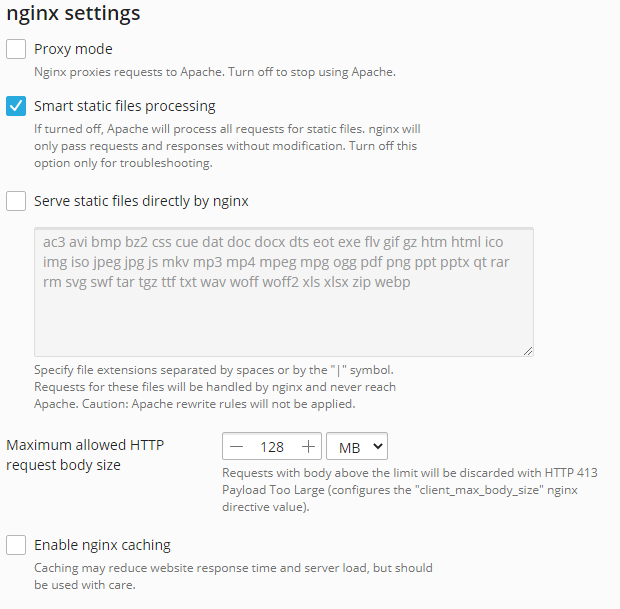Configuring web server settings is designed for experienced users and allows you to configure additional web server directives, block and allow access to your site from specific ip addresses. Here you can specify Apache web server settings for this website. Custom Apache configuration is useful, for example, when you want to use a new type of index files on your website or to associate a certain MIME type with certain filename extensions. The Default value means that Apache will use the corresponding directive from its server-wide configuration. If Apache is running with nginx as a frontend server, you can specify the nginx settings on this page as well.

- Additional Apache directives
If you cannot find particular settings, add them to the fields below. These settings will override the server-wide Apache directives. The directives from the first field are used when a visitor accesses the site over HTTP. The second field contains the directives for HTTPS. Generally, you should add your directives to both fields. Use the same syntax as you use for httpd.include. For example, if you want to set a custom error page, add the line: ErrorDocument 401 /my_error_page.html

- Additional nginx directives
Here you can specify the settings for the nginx reverse proxy server that runs in front of Apache. Your directives will override the server-wide nginx configuration. For example, you may want to change the connection timeout or to pack requests with gzip. Use the same syntax as you use for nginx.conf. For example, if you want to pack all the proxied requests with gzip, add the line: 'gzip_proxied any;'.
This configuration allows you to fine-tune the server, after saving, do not forget to check the site’s performance, as these settings directly affect the execution of scripts.

